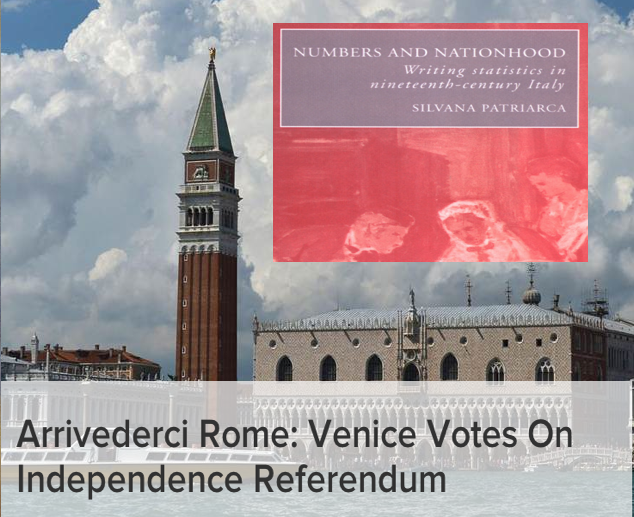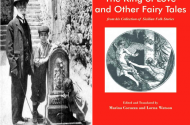“Italia Germanica”
Prior to the military conquest of the Kingdom of Two Sicilies in 1860-61 A.D., there had not been even the remotes semblance of a politically unified nation-state of peninsular Italy and the islands, since the fall of the West Roman Empire circa 500 A.D.
On the contrary, there were profound ethnic and culture differences between northern and southern Italy.
This fact, of profoundly different ethnicity (not race!) and its cultural implications, is brought out by David Gilmour in his history: "The Pursuit of Italy”. Indeed, he has a dedicated section of the book titled “Italia Germanica”.
He writes:
“[Circa 1000 A.D.] the south of Italy was very different from the north ... more ethnically varied, its life determined by the Mediterranean and its people in a way unknown to the cities of the Po Valley with their ties to Europe beyond the Alps."
"Like the north, the south had Romans, Lombards and Franks, but it also contained large numbers of Byzantine Greeks and Muslim Arabs as well as a significant Jewish minority. (p. 60 emp.+)
Further, and more importantly, what Gilmour does not mention, is the historic Mediterranean cultural heritage of the South goes back near 3,000 years to circa 800 B.C. when the Greeks and Phoenicians melded with the other indigenous Mediterranean people in southern Italy and Sicily (e.g. Sicels, Sicani, etc).
Moreover, from 1090 A.D. Italy south of Rome and Sicily was not only Mediterranean culturally unified, but also politically. In that year, Norman brothers Roger and Robert unified peninsular South of Rome with Sicily. Gilmore writes:
The southern multi-cultural, multi-confessional amalgam was welded into a kingdom by Normans between circa 1050 -1090 (p. 60 emp.+)
“The Two Sicilies”
After the Normans, for approximately the next five centuries, the European dynasties (German Hohenstaufen, French Angevin, Spanish Aragon, Papacy) laid Feudal claims to southern Italy and Sicily. As a result of the 1282 Sicilian revolt, know as the Sicilian Vespers, the political unity of southern Italy and Sicily, established by the Normans, was fractured.
The French Angevins maintained control of southern Italy, dubbed Kingdom of Naples, and the Spanish Aragons took over Sicily. However, the Mediterranean cultural unity of the South and Sicily was maintained. In 1501, King Ferdinand II of Aragon, conquered Naples and reunified the former Norman kingdom, which came to be known as the Two Sicilies .
The Two Sicilies continued to be a European political football, with various dynastic Feudal claims being made for it. Nevertheless, southern Italy and Sicily maintained a semblance political unity. More importantly, cultural unity was persevered, differentiating the Mediterranean South from the Cisalpine North, until the 1860-61 A.D. conquest by the Piedmontese.
The political unit of southern Italy and Sicily for centuries is clearly demonstrated by the following maps:
However, the Piedmontese conquest differed from all the previous feudal pretenders to the throne of the “Two Sicilies”.
The Hohenstaufens, Angevins, Aragones, etc. quest for ‘over-lordship’ or Feudal control did not entail cultural change in the Two Sicilies. The people continued in their historic cultural milieu (governance, language, religion, class character, etc.).
The Piedmontese, on the other-hand attempted to absorb the South and Sicily into its northern political and cultural milieu: the southern form of governance changed, language changed, class-character changed, Catholic religious orders were set-upon and their lands confiscated, military conscription was imposed, etc. All of the profound social changes so eloquently described in Lampedusa's "The Leopard".
In short, by force of arms, the profoundly historically and culturally different South of Rome was united with the North and Terroni-ized (i.e. "the cultural lobotomy of the South" - see: Pino Aprile’s Terroni )
19th Century Italian Nationalism
“Patriotic Statistics”
While the Piedmont conquest was a coup d’tate putting an end to the State of the Two Sicilies, the ideological justification for the invasion was developed much earlier in the nineteenth century and the ideological Terroni-ization of southerners continues down to the present.
Silvana Patriarca, in her profoundly (dare I say: “mind boggling”) scholarly book Numbers and Nationhood, describes how Italian nationalist, beginning circa 1800 A.D., used what were called“Patriotic Statistics” to create the illusion of an Italian nation-state, continuing that statistical process after the unification; thereby, foisting a homogenious nationalist ideology on to the culturally heterogenious masses.
She writes:
“This study will contend that in Italy statistics not only performed a work of ideological and political legitimations, but also contributed to the creation, the ‘production’ as it were, of the Italian nation, that is of the very entity that they were supposed to describe.” (p. 4)
The important point here: While we think of statistics as descriptive tools (e.g. census and economic data; election results and opinion polls, etc.), what Patriarca has brilliantly and importantly demonstrated is that statistics is NOT just descriptive-arithmetic; rather, it can also be used as an ideological tool to mold public opinion.
Indeed, in nineteenth century Italy statistics made a major contribution to the creation and perpetuation of the Italian nation-state.
For example:
“Statistics, like any representation, do not merely ‘reflect’,’ but ‘supplement’ reality” (p.5 fn. 15 emp. +)
The supplemented reality in this case is the concept of an Italian nation-state.
The Italian nation-state, or any semblance of a state, did NOT exist in reality!
Accordingly, Italian national ideologues “supplemented” (created) that reality with “Patriotic Statistics”.
Further:
“Statistical investigation and descriptions were predicated on an idea of the nation as an object to be known, measured, compared, and governed... But statistics also created a particular image of the national space, they gave a body to an abstract entity (p.7 emp.+)
Note the language here: “created an image of national space”. The nation-state existed only in the minds of the political elites – there was not an historical material reality of such a state.
Again:
“The notion of representation is not easy to pinpoint especially in its relation to ideology: representations could be seen as parts of ideologies, but they can also in turn ‘contain’ ideology...” (p.10 fn.28)
Note the relation between concept of ‘representation’ (i.e. description) and ‘ideology’ (i.e. nationalism).
Italian Patriotic Statistics were not being used to ‘represent’ (i.e. describe) Italy, they were being used to create in the minds of populous the idea (ideology) of a nation-state.
In short:
The Italian nation-state was created by force of arms and Statistical Propaganda
{Note: For detailed and critical historiographic discussions of Prof. Patriarca’s book: see “Related Articles” numbers 1-3.}
Conclusion:
So it seems that there was virtually no material historic or cultural basis in reality for the existence of an Italian nation-state in 1860. Rather it was crated by force of arms and ideologically justified in part by the use of “Patriotic Statistics” (see: Patriarca on "Patriotic Statistics" pp. 122-155).
Needless to say, the ideal of Italian nation-state and ideology of nationalism is a profoundly complex phenomenon and cannot be limited to one causal variable – statistics. However, Prof. Patriarca’s book demonstrates the tenuous national conditions that existed the time of the CREATION of the Italian State.
And, those tenuous conditions are, as Claudio Lavanga wrote above, “threatening to break up Italy 150 years after its official unification.”
While Americans of southern-Italian descent have no basis for input in contemporary Italian political discussions, those discussions are of interest in that they help them understand their history and the origins of their culture.
///////////////////////
Pedagogical Implications
If it ever should come to pass that a college or university develops a comprehensive southern-Italian American curriculum, Prof. Patriacra’s book I should think would be required reading at the graduate level and undergraduate teachers would draw heavily from it for lecture material.
Further, Prof. Partriarca’s book points to a significant deficit in post-secondary Italian language education, which heavily emphasizes Italian literature.
Her book has no less than 751 footnotes and annotations, and 586 bibliographic references – virtually all Italian language history and social science publications.
America Italian language students studying Dante and Manzoni are no more capable of grasping the historiographic and social science concepts in the Patriarca sources, than Italian English language students studying Shakespeare and Emily Dickenson can understand the historiography of historians like Lord Action and Fredrick Jackson Turner. "Grasping concepts" being understood epistemologically as something much more than simply denotative dictionary translating.
{Note: For detail discussions of the bias in north Italian translations vis-a-vis southern; see Related Articles numbers 4 -6 .)
As this blog has repeatedly and persistently documented, in the American university system, near 17 million Americans of southern-Italian descent are denied education in their Patria Meridionale history and culture. “Italian American Studies” programs are limited to post-Ellis Island experiences and “Italian Studies” are essentially Tuscan studies. Further, the students are even denied relevant historiographic/social science language training that would allow them to seek out that history on their own.
In short, as Pino Aprile, in his book Terroni, so eloquently described how the people South of Rome were/are systematically and consciously denied their history ("culturally lobotomized") by northern propagandist - so too, southern-Italian Americans are Terroni-ized.
Ironically, Terroni-ized largely by their own southern-Italian American literati!
Fascinating … no?

.png)












